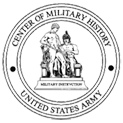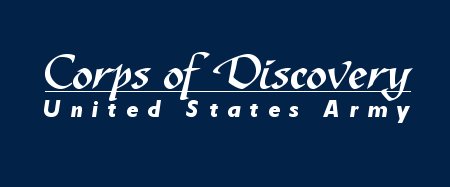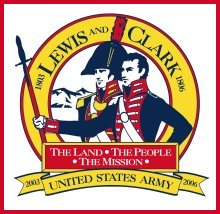The U.S. Army and the Lewis & Clark
Expedition
Part 3: Preparations
Before Congress approved funds for the expedition, Lewis had already
begun his preparations. From Jefferson he learned how to use the sextant
and other measuring instruments. Together they studied Alexander MacKenzie’s
account of his 1793 Canadian expedition to the Pacific coast and the
maps in Jefferson’s collection. The president even had a special
map made for Lewis that detailed North America from the Pacific coast
to the Mississippi River Valley, with emphasis on the Missouri River.
While the president drafted his instructions for the expedition, the
captain worked on his planning and logistical preparations. In the evenings
they discussed their concepts of the operation.
Leaving Washington in March, Lewis traveled to the Army’s arsenal
at Harpers Ferry (at that time in Virginia), where he obtained arms,
ammunition, and other basic supplies while supervising the construction
of an experimental iron boat frame he had designed. Next, Captain Lewis
went to Lancaster and Philadelphia, Pennsylvania, where Jefferson had
arranged for some of the nation’s leading scientific minds to instruct
Lewis in botany and natural history, medicine and anatomy, geology and
fossils, and navigation by the stars. While in Philadelphia, Lewis purchased
additional supplies, including a new condensed food, “portable
soup.” He also arranged for the Army to provide transportation for his nearly four tons of supplies
and equipment from Philadelphia to Pittsburgh. Lewis then set off for
Washington for a final coordination meeting with President Jefferson.
Army to provide transportation for his nearly four tons of supplies
and equipment from Philadelphia to Pittsburgh. Lewis then set off for
Washington for a final coordination meeting with President Jefferson.
When Lewis returned to Washington in mid-June, he was nearly two months
behind his original schedule. He had hoped to be in St. Louis by 1 August;
but after three intensive months of preparation, Lewis realized that
the successful accomplishment of his mission would require more men
and another officer. Now the president handed the captain his formal
instructions. Foremost among Jefferson’s expectations was an all-water
route to the Pacific. Lewis was told to explore and map the rivers carefully,
to learn all he could about trade routes and traders of the region,
and to study every Indian tribe along the way. Jefferson ordered Lewis
to treat the Indians with dignity and respect and to invite their chiefs
to come to Washington for a visit. Lastly, Captain Lewis was to describe
the geography of the region and to bring back samples of plant and animal
life. As they discussed the expedition, Jefferson acknowledged that
it would require more men and another leader.
With Jefferson’s consent, Lewis wrote to his friend and former
comrade, William Clark, offering him the assignment as co-commander.
Both Lewis and Clark had served in the Legion of the United States under
General Anthony Wayne a decade earlier. Clark had been an infantry company
commander but had resigned his lieutenancy in 1796 to attend the business
affairs of his older brother, General George Rogers Clark. In addition
to approving the choice of William Clark, Jefferson ordered the War
Department to give Lewis unlimited purchasing power for the expedition.
Moreover, the president authorized the captain to recruit noncommissioned
officers and men from any of the western army posts. On 4 July 1803,
news arrived of the Louisiana Purchase, which resolved any international
problems affecting the expedition. The next day Lewis set off for Pittsburgh.





